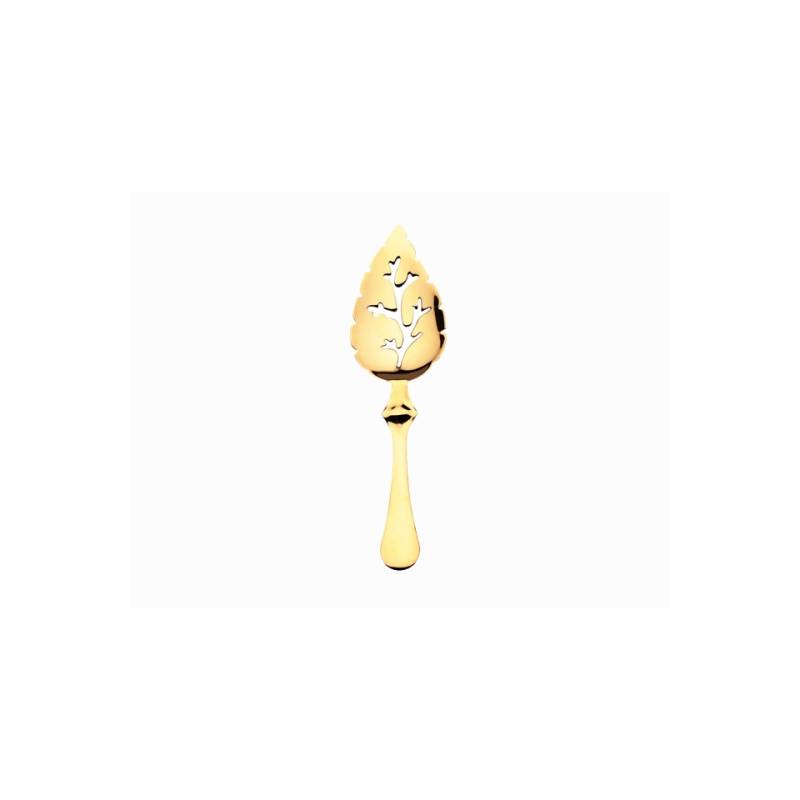Absinthe made a comeback since the 1990s is now served in a variety of methods, the classic one with a teaspoon being the best known.
Do you know why the teaspoon is used?
A slotted spoon is placed on the glass containing absinthe, on which a sugar cube is placed. Ice water is gently poured over the lump, possibly drop by drop, in order to cause the sugar to dissolve and the liquor to dilute, usually in a ratio of 3:1 to 5:1. During this step, liquor components that are not soluble in water, such as green anise, and fennel seeds, emerge from the solution and tend to opacify it, going on to give rise to a milky opalescence, called louche, from the French, opaque or shaded. Dilution in water was not only important from the point of view of lowering the alcohol content (typically around 70°) of the liqueur, but also to allow the entire aromatic bouquet of the drink to reveal itself, since in pure liqueur there is a clear predominance of aniseed. The drink was then gently stirred with the same perforated spoon. The addition of a sugar cube, and possibly more than one, did not arise as a necessity from the type of liqueur but rather from the typical French taste of the time, the late 19th century, which saw a clear prevalence of sweet drinks.
The flambé version
The flambé ritual on the contrary has a much more recent history and involves wetting the sugar cube with absinthe, setting it on fire and then pouring water over it.
Between 1990 and 1995 the first absinthe substitutes (which had only the name of absinthe) began to spread in Prague, and since bartenders knew nothing but that legends wanted it to be "the drug of the cursed poets," all they did was borrow the ritual of the heroin addict heating heroin on a spoon and adapted it to absinthe. These absinthes tasted much more like pure alcohol than the traditional distillate so such a ritual did not alter its qualities, but rather served to impart some flavor to it.
If you need assistance regarding orders, returns, shipments click here.
If you want to know more about this product but haven't found the answer you were looking for in the description, ask your question here, we will answer you as soon as possible.
You must be registered to access this feature Login

